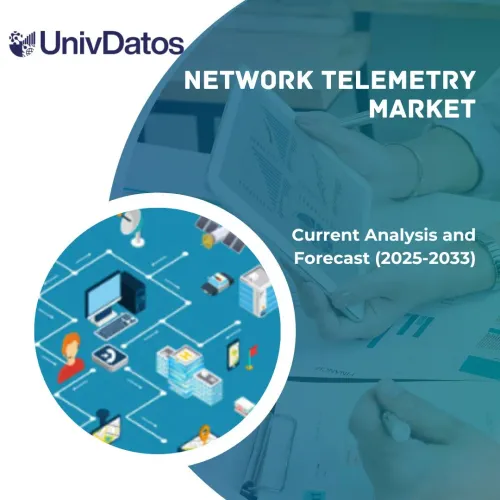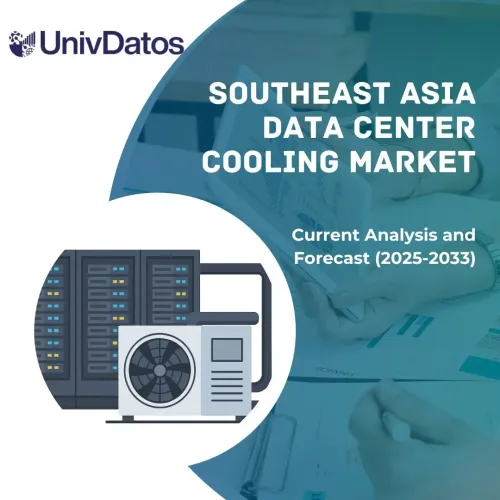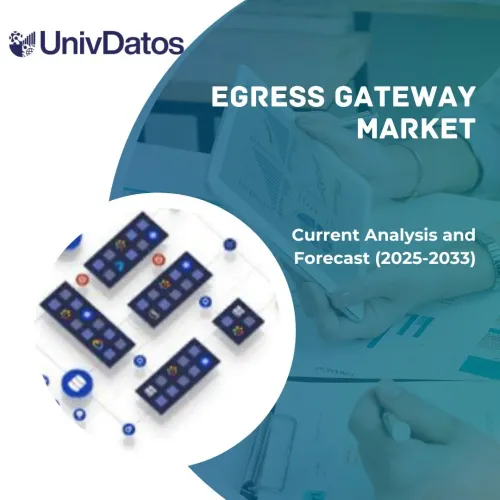- الرئيسية
- معلومات عنا
- صناعة
- الخدمات
- قراءة
- اتصل بنا
سوق إنترنت الأشياء في قطاع المرافق: التحليل الحالي والتوقعات (2022-2028)
التركيز على المكون (الحلول والخدمات)؛ المستخدمين النهائيين (إدارة الغاز، وإدارة شبكات الكهرباء، وإدارة المياه ومياه الصرف الصحي)؛ والمنطقة/البلد
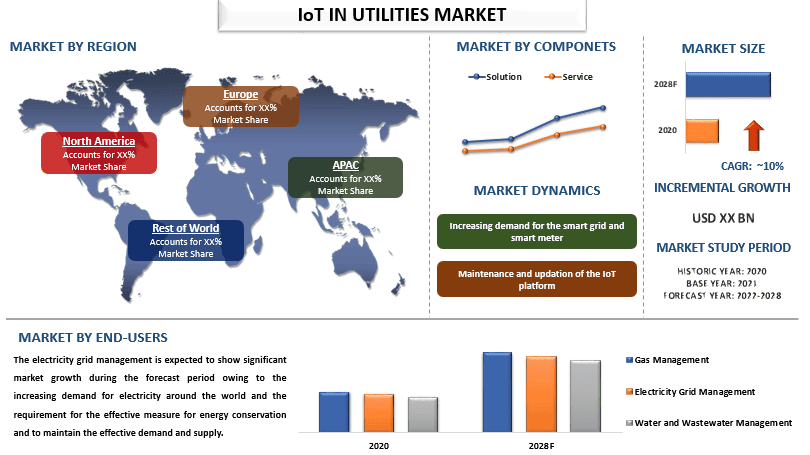
من المتوقع أن ينمو سوق إنترنت الأشياء العالمي في المرافق بمعدل كبير يبلغ حوالي 10٪ خلال الفترة المتوقعة. يتم تعريف إنترنت الأشياء بأنه نظام الشبكة للأشياء المادية المتصلة بالبرامج وأجهزة الاستشعار والأجهزة الأخرى لجمع البيانات وتحليلها وتبادلها مع الخادم والأجهزة الأخرى عبر الإنترنت. إنترنت الأشياء هو مجموعة من المنصات المختلفة والتكنولوجيا المتقدمة بما في ذلك التعلم الآلي والذكاء الاصطناعي للمحادثة ومنصة الحوسبة السحابية وتكنولوجيا الاستشعار منخفضة الطاقة. في الآونة الأخيرة، شهد إنترنت الأشياء في سوق المرافق طلبًا كبيرًا بسبب دمجه في العديد من التطبيقات مثل الشبكات الذكية لضمان الكفاءة والاستدامة جنبًا إلى جنب مع مراقبة الاستهلاك في الوقت الفعلي. يمكن أن يساعد دمج إنترنت الأشياء في خفض التكاليف التشغيلية وتحسين الكفاءة وضمان الهدف البيئي لنظام توليد وتوزيع الطاقة القائم على الطلب. أيضًا، يدعم الاستثمار المتزايد جنبًا إلى جنب مع الاندماج والاستحواذ دمج إنترنت الأشياء في سوق المرافق. على سبيل المثال، في أكتوبر 2019، أعلنت Landis+Gyr و Light عن اتفاقية مدتها خمس سنوات بقيمة 750 مليون ريال برازيلي لأحد أكبر مشاريع الشبكات في أمريكا الجنوبية.
تعد كل من Oracle Corporation و IBM Corporation و Cisco System Inc. و Landis+Gyr و Verizon و Energyworx BV و HCL Technologies Limited و Honeywell International Inc. و ABB Ltd. و Siemens AG من اللاعبين الرئيسيين في السوق. تم إجراء العديد من عمليات الاندماج والاستحواذ جنبًا إلى جنب مع الشراكات من قبل هؤلاء اللاعبين لتسهيل حصول العملاء على منتجات/تقنيات مبتكرة وعالية التقنية.
الرؤى المقدمة في التقرير
"من بين المكونات، من المتوقع أن تشهد فئة الحلول معدل نمو سنوي مركب أعلى خلال الفترة المتوقعة"
بناءً على المكونات، يتم تقسيم السوق إلى حلول وخدمات. من المتوقع أن يشهد قطاع الحلول نموًا كبيرًا في السوق خلال الفترة المتوقعة نظرًا لاستخدامه في إدارة القوى العاملة وإدارة الشبكة والتحكم الإشرافي واكتساب البيانات جنبًا إلى جنب مع نظام الفوترة ونظام معلومات العملاء من بين أمور أخرى. بالإضافة إلى ذلك، يساعد دمج إنترنت الأشياء الشركات على دمج عمليات الأعمال ويدفع الشركات نحو النمو. بالإضافة إلى ذلك، من المتوقع أن يدعم دمج التكنولوجيا القائمة على السحابة في الصناعات للمراقبة عن بعد نمو السوق لقطاعات الحلول.
"من بين المستخدمين النهائيين، من المتوقع أن تستحوذ إدارة شبكة الكهرباء على حصة كبيرة في السوق في عام 2020"
بناءً على المستخدمين النهائيين، تم تصنيف السوق إلى إدارة الغاز وإدارة شبكة الكهرباء وإدارة المياه والصرف الصحي. من المتوقع أن تُظهر إدارة شبكة الكهرباء نموًا كبيرًا في السوق خلال الفترة المتوقعة نظرًا للطلب المتزايد على الكهرباء في جميع أنحاء العالم ومتطلبات التدابير الفعالة للحفاظ على الطاقة والحفاظ على الطلب والعرض الفعالين. بالإضافة إلى ذلك، من المتوقع أن يدعم استبدال البنية التحتية للشبكة المتقادمة ونشر البنية التحتية للقياس المتقدم (AMI) سوق إدارة شبكة الكهرباء. على سبيل المثال، زاد الطلب على الكهرباء لعام 2021 بحوالي 4٪ مقارنة بالعام الماضي.
"من المتوقع أن تستحوذ أمريكا الشمالية على حصة كبيرة في السوق"
في عام 2020، استحوذت أمريكا الشمالية على حصة كبيرة من سوق إنترنت الأشياء في المرافق. ويرجع ذلك أساسًا إلى وجود العديد من اللاعبين الرئيسيين في السوق والاعتماد المتزايد لتقنيات الشبكة الذكية في المنطقة. بالإضافة إلى ذلك، فإن الاستخدام المتزايد للمكونات المادية مثل مكيفات الهواء والأضواء وغيرها يزيد من الطلب على الكهرباء والعدادات الذكية في المنطقة، كما أن الدخل المتاح المتزايد والإنفاق المتزايد للفرد في المنطقة يدفع نمو السوق. أيضًا، تم اتخاذ المبادرة من قبل الشركات المختلفة لنشر مخططات المرافق الذكية بهدف تقديم بنية تحتية متطورة للقياس من الجيل الثاني وإدارة الأصول وميزة الأمان ووحدة الاتصالات وإدارة بيانات العدادات جنبًا إلى جنب مع الاستثمار المتزايد الذي يدعم نمو السوق لإنترنت الأشياء في سوق المرافق في المنطقة. علاوة على ذلك، فإن الاعتماد المتزايد لمصادر التوليد اللامركزية والمتجددة جنبًا إلى جنب مع البنية التحتية البديلة لصنع التعريفات القائمة على الأداء يؤدي إلى استخلاص الاستثمار في الإرسال الآلي والتسخين الذاتي مع البنية التحتية للتوزيع.
أسباب شراء هذا التقرير:
- تتضمن الدراسة تحليل تقدير حجم السوق والتنبؤ به الذي تم التحقق منه من قبل خبراء الصناعة الرئيسيين الموثوق بهم.
- يقدم التقرير مراجعة سريعة للأداء العام للصناعة في لمحة واحدة.
- يغطي التقرير تحليلاً متعمقًا لأقران الصناعة البارزين مع التركيز الأساسي على البيانات المالية التجارية الرئيسية ومجموعة المنتجات واستراتيجيات التوسع والتطورات الأخيرة.
- فحص مفصل للدوافع والقيود والاتجاهات الرئيسية والفرص السائدة في الصناعة.
- تغطي الدراسة السوق بشكل شامل عبر قطاعات مختلفة.
- تحليل متعمق على المستوى الإقليمي للصناعة.
خيارات التخصيص:
يمكن زيادة تخصيص سوق إنترنت الأشياء العالمي في المرافق وفقًا للمتطلبات أو أي قطاع آخر من السوق. إلى جانب ذلك، تتفهم UMI أن لديك احتياجات عمل خاصة بك، لذا لا تتردد في التواصل معنا للحصول على تقرير يناسب متطلباتك تمامًا.
جدول المحتويات
منهجية البحث لتحليل سوق إنترنت الأشياء في قطاع المرافق (2022-2028)
كان تحليل السوق التاريخي، وتقدير السوق الحالي، والتنبؤ بالسوق المستقبلي لسوق إنترنت الأشياء العالمي في قطاع المرافق هي الخطوات الرئيسية الثلاث التي تم اتخاذها لإنشاء وتحليل اعتماد إنترنت الأشياء في المرافق في المناطق الرئيسية على مستوى العالم. تم إجراء بحث ثانوي شامل لجمع الأرقام التاريخية للسوق وتقدير حجم السوق الحالي. ثانيًا، للتحقق من صحة هذه الرؤى، تم أخذ العديد من النتائج والافتراضات في الاعتبار. علاوة على ذلك، تم إجراء مقابلات أولية شاملة أيضًا مع خبراء الصناعة عبر سلسلة القيمة لسوق إنترنت الأشياء العالمي في قطاع المرافق. بعد افتراض أرقام السوق والتحقق من صحتها من خلال المقابلات الأولية، استخدمنا نهجًا من أعلى إلى أسفل/من أسفل إلى أعلى للتنبؤ بحجم السوق بالكامل. بعد ذلك، تم اعتماد أساليب تقسيم السوق وتثليث البيانات لتقدير وتحليل حجم سوق القطاعات والقطاعات الفرعية للصناعة ذات الصلة. يتم شرح المنهجية التفصيلية أدناه:
تحليل الحجم التاريخي للسوق
الخطوة 1: دراسة متعمقة للمصادر الثانوية:
تم إجراء دراسة ثانوية تفصيلية للحصول على الحجم التاريخي لسوق إنترنت الأشياء في قطاع المرافق من خلال مصادر الشركة الداخلية مثل التقارير السنوية والبيانات المالية، وعروض الأداء، والبيانات الصحفية، وما إلى ذلك، والمصادر الخارجية بما في ذلك المجلات، والأخبار والمقالات، والمنشورات الحكومية، ومنشورات المنافسين، وتقارير القطاعات، وقاعدة بيانات الطرف الثالث، والمنشورات الموثوقة الأخرى.
الخطوة 2: تجزئة السوق:
بعد الحصول على الحجم التاريخي لسوق إنترنت الأشياء في قطاع المرافق، أجرينا تحليلًا ثانويًا تفصيليًا لجمع رؤى السوق التاريخية وحصصها للقطاعات والقطاعات الفرعية المختلفة للمناطق الرئيسية. يتم تضمين القطاعات الرئيسية في التقرير كمكونات ومستخدمين نهائيين. علاوة على ذلك، تم إجراء تحليلات على مستوى الدولة لتقييم الاعتماد الكلي لنماذج الاختبار في تلك المنطقة.
الخطوة 3: تحليل العوامل:
بعد الحصول على الحجم التاريخي للسوق للقطاعات والقطاعات الفرعية المختلفة، أجرينا تحليلًا تفصيليًا للعوامل لتقدير الحجم الحالي لسوق إنترنت الأشياء في قطاع المرافق. علاوة على ذلك، أجرينا تحليلًا للعوامل باستخدام متغيرات تابعة ومستقلة مثل المكونات المختلفة والمستخدمين النهائيين لإنترنت الأشياء في قطاع المرافق. تم إجراء تحليل شامل لسيناريوهات جانب الطلب والعرض مع مراعاة أهم الشراكات وعمليات الاندماج والاستحواذ والتوسع التجاري وإطلاق المنتجات في قطاع سوق إنترنت الأشياء في قطاع المرافق في جميع أنحاء العالم.
تقدير حجم السوق الحالي والتنبؤ به
تحديد حجم السوق الحالي: بناءً على رؤى قابلة للتنفيذ من الخطوات الثلاث المذكورة أعلاه، توصلنا إلى حجم السوق الحالي، واللاعبين الرئيسيين في سوق إنترنت الأشياء العالمي في قطاع المرافق، والحصص السوقية للقطاعات. تم تحديد جميع الحصص المئوية المطلوبة والتقسيمات السوقية باستخدام النهج الثانوي المذكور أعلاه وتم التحقق منها من خلال المقابلات الأولية.
التقدير والتنبؤ: لتقدير السوق والتنبؤ به، تم تخصيص أوزان لعوامل مختلفة بما في ذلك المحركات والاتجاهات والقيود والفرص المتاحة لأصحاب المصلحة. بعد تحليل هذه العوامل، تم تطبيق تقنيات التنبؤ ذات الصلة، أي النهج من أعلى إلى أسفل/من أسفل إلى أعلى للتوصل إلى توقعات السوق لعام 2028 للقطاعات والقطاعات الفرعية المختلفة عبر الأسواق الرئيسية على مستوى العالم. تتضمن منهجية البحث المعتمدة لتقدير حجم السوق ما يلي:
- حجم سوق الصناعة، من حيث الإيرادات (بالدولار الأمريكي) ومعدل اعتماد إنترنت الأشياء في سوق المرافق عبر الأسواق الرئيسية محليًا
- جميع الحصص والتقسيمات والتحليلات المئوية لقطاعات السوق وقطاعاته الفرعية
- اللاعبون الرئيسيون في سوق إنترنت الأشياء العالمي في قطاع المرافق من حيث المنتجات المقدمة. أيضًا، استراتيجيات النمو التي يتبناها هؤلاء اللاعبون للتنافس في السوق سريع النمو
التحقق من صحة حجم السوق وحصته
البحث الأولي: تم إجراء مقابلات متعمقة مع قادة الرأي الرئيسيين (KOLs) بما في ذلك كبار المديرين التنفيذيين (CXO/VPs، ورئيس قسم المبيعات، ورئيس قسم التسويق، ورئيس العمليات، والرئيس الإقليمي، ورئيس الدولة، وما إلى ذلك) عبر المناطق الرئيسية. ثم تم تلخيص نتائج البحث الأولي وإجراء تحليل إحصائي لإثبات الفرضية المذكورة. تم دمج المدخلات من البحث الأولي مع النتائج الثانوية، وبالتالي تحويل المعلومات إلى رؤى قابلة للتنفيذ.
توزيع المشاركين الأوليين في مناطق مختلفة
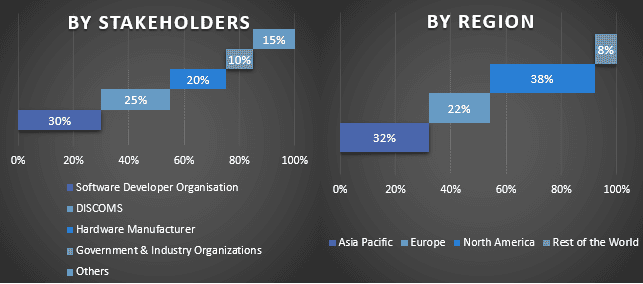
هندسة السوق
تم استخدام تقنية تثليث البيانات لإكمال تقدير السوق الإجمالي والتوصل إلى أرقام إحصائية دقيقة لكل قطاع فرعي وقطاع فرعي من سوق إنترنت الأشياء العالمي في قطاع المرافق. تم تقسيم البيانات إلى عدة قطاعات وقطاعات فرعية بعد دراسة المعلمات والاتجاهات المختلفة في مجالات المكونات والمستخدمين النهائيين في سوق إنترنت الأشياء العالمي في قطاع المرافق.
الهدف الرئيسي لدراسة سوق إنترنت الأشياء العالمي في قطاع المرافق
تم تحديد اتجاهات السوق الحالية والمستقبلية لسوق إنترنت الأشياء العالمي في قطاع المرافق في الدراسة. يمكن للمستثمرين الحصول على رؤى استراتيجية لتركيز تقديرهم للاستثمارات على التحليل النوعي والكمي الذي تم إجراؤه في الدراسة. حددت اتجاهات السوق الحالية والمستقبلية الجاذبية الكلية للسوق على المستوى الإقليمي، مما يوفر منصة للمشارك الصناعي لاستغلال السوق غير المستغلة للاستفادة من ميزة المحرك الأول. تشمل الأهداف الكمية الأخرى للدراسات ما يلي:
- تحليل حجم السوق الحالي والمتوقع لسوق إنترنت الأشياء في قطاع المرافق من حيث القيمة (بالدولار الأمريكي). أيضًا، تحليل حجم السوق الحالي والمتوقع للقطاعات والقطاعات الفرعية المختلفة
- تشمل القطاعات في الدراسة مجالات المكونات والمستخدمين النهائيين.
- تحديد وتحليل الإطار التنظيمي لإنترنت الأشياء في قطاع المرافق
- تحليل سلسلة القيمة المعنية بوجود وسطاء مختلفين، إلى جانب تحليل سلوكيات العملاء والمنافسين في الصناعة.
- تحليل حجم السوق الحالي والمتوقع لسوق إنترنت الأشياء في قطاع المرافق للمنطقة الرئيسية.
- تشمل الدول الرئيسية في المناطق التي تمت دراستها في التقرير منطقة آسيا والمحيط الهادئ وأوروبا وأمريكا الشمالية وبقية العالم.
- ملفات تعريف الشركات لسوق إنترنت الأشياء في قطاع المرافق واستراتيجيات النمو التي يتبناها اللاعبون في السوق للاستمرار في السوق سريع النمو
- تحليل متعمق على المستوى الإقليمي للصناعة
ذات صلة التقارير
العملاء الذين اشتروا هذا المنتج اشتروا أيضًا






